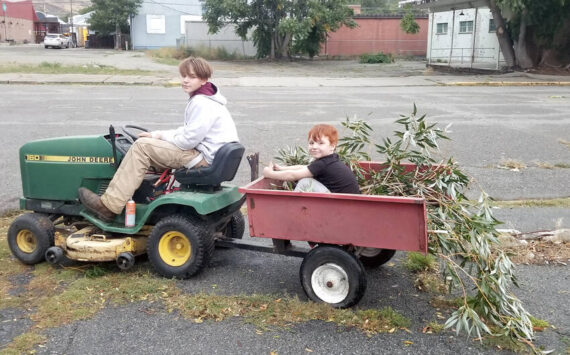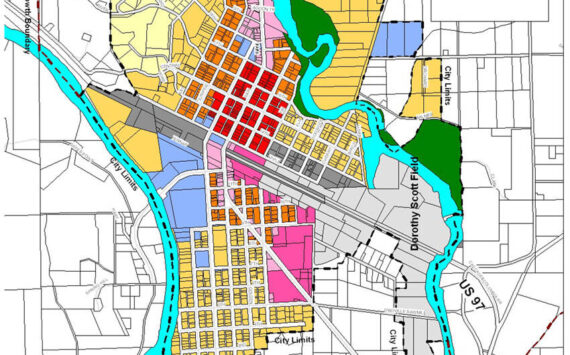Tonasket approves plan for spray park drainage
“They’re met with bureaucracy everywhere they turn. How sad is that? Jill Vugteveen, Tonasket City Council Member
TONASKET – The Tonasket City Council approved a plan that all involved hope will be the final step in getting the Tonasket Water Ranch constructed in Chief Tonasket Park sooner rather than later.
At the Tuesday, July 8, city council meeting, Linda Black – who has spearheaded the spray park project – and city planner Kurt Danison gave an overview of the project and the reason for the delay in getting construction started that cropped up this spring.
Danison said the question arose of what would happen to the water park’s run-off. If the spray park ran at maximum capacity (typically spray parks only run a few of their implements at a time), there would be approximately 100,000 gallons of run-off a day. That is in contrast to the 104,000 a day of water that Public Works Superintendent Hugh Jensen said is applied to the grass in Chief Tonasket Park on a daily basis.
The comparison, Danison said into a question from Mayor Patrick Plumb, “Is immaterial.
“We can talk philosophy all night but it won’t build us a water park…. Most water parks in the state use dry wells, send the water into into the storm water system, all sorts of things. Because of the volume of water it Department of Health kicked it ot their large on-site sewer system people.
“They responded and required in the permit that it’s wastewater, therefore it has to go to the treatment plant.”
The complication, Danison said, would be that if the city contributed to the project by providing access to the stormwater drainage system, even if in combination with an upgrade to the nearby restroom facility in the park, the project would change from its current privately-funded model into a public works project.
“That would be a sewer lift station,” Danison said. “So all of a sudden it goes from begin $55,000 to (to provide drainage) potentially another $150,000, a six month lead time for engineering, design, construction, and public bids for the public works project. That upset the apple cart.”
After consulting with city engineering firm Varela and Associates, Danison and Jensen presented three possibilities to the council, the first two of which added significant expense to the park.
The third would allow the installation of a pipe that would drain the water directly into one of the cells in the treatment plant, which is about 900 feet away.
“There are no limitations,” Danison said. “It’s not attached to wastewater, and it’s something that could be done relatively inexpensively and quickly. The only limitation is for lead time for ordering the equipment that is necessary to install.”
It also gave Black a fundraising target for the last bit of the project, which until now has been hard to pin down. The city wasn’t asked to contribute funds to the project, and couldn’t without it becoming a city project with all the previously mentioned strings attached.
In the longer range, Danison said, that could also allow the city to upgrade the bathrooms at a time of its own choosing, and then attach the spray park drainage to the upgrade.
Black, for her part, expressed frustration at the delays and complications that have arisen in what she originally thought would be a relatively simple and beneficial project to give kids a chance to play in the water during what will likely be a lengthy effort to get the city swimming pool rebuilt.
Council member Jill Vugteveen sympathized with Black’s frustration.
“It just seems like if she knew then what she knows now, she would never have come and asked us (if she could built the water park,” Vugteveen said. “We have people in this community with all this energy. They try to go forward and take on these projects and bring something wonderful to this town. And they’re met with bureaucracy everywhere they turn. How sad is that?”




